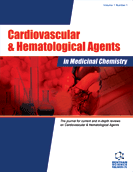Abstract
Cardiovascular disease continues to be a major cause of morbidity and mortality in patients with Type 2 Diabetes Mellitus. Whilst a focus on improved glucose control and HbA1c has led to a reduction in the progression and development of microvascular complications, the potential for this strategy to reduce cardiovascular event rates is less clearly defined. Identification of the incretin axis has facilitated the development of several novel therapeutic agents which target glucagon-like peptide-1 (GLP-1) pathways. The effects on glucose homeostasis are now established, but there is also now an increasing body of evidence to support a number of pleiotropic effects on the heart that may have the potential to influence cardiovascular outcomes. In this article, we review myocardial energy metabolism with particular emphasis on the potential benefits associated with a shift towards increased glucose utilisation and present the pre-clinical and clinical evidence regarding incretin effects on the heart. In addition we discuss the potential mechanism of action and benefit of drugs that modulate GLP-1 in patients with type 2 diabetes mellitus and coronary artery disease.
Keywords: Cardioprotection, diabetes, dipeptidyl peptidase-4, glucagon-like peptide-1, glucose, heart failure, incretin, ischaemia-reperfusion, metabolic modulation, myocardial metabolism
Cardiovascular & Hematological Agents in Medicinal Chemistry
Title:Cardiac Protection via Metabolic Modulation: An Emerging Role for Incretin-Based Therapies?
Volume: 10 Issue: 4
Author(s): Liam M. McCormick, Anna C. Kydd and David P. Dutka
Affiliation:
Keywords: Cardioprotection, diabetes, dipeptidyl peptidase-4, glucagon-like peptide-1, glucose, heart failure, incretin, ischaemia-reperfusion, metabolic modulation, myocardial metabolism
Abstract: Cardiovascular disease continues to be a major cause of morbidity and mortality in patients with Type 2 Diabetes Mellitus. Whilst a focus on improved glucose control and HbA1c has led to a reduction in the progression and development of microvascular complications, the potential for this strategy to reduce cardiovascular event rates is less clearly defined. Identification of the incretin axis has facilitated the development of several novel therapeutic agents which target glucagon-like peptide-1 (GLP-1) pathways. The effects on glucose homeostasis are now established, but there is also now an increasing body of evidence to support a number of pleiotropic effects on the heart that may have the potential to influence cardiovascular outcomes. In this article, we review myocardial energy metabolism with particular emphasis on the potential benefits associated with a shift towards increased glucose utilisation and present the pre-clinical and clinical evidence regarding incretin effects on the heart. In addition we discuss the potential mechanism of action and benefit of drugs that modulate GLP-1 in patients with type 2 diabetes mellitus and coronary artery disease.
Export Options
About this article
Cite this article as:
M. McCormick Liam, C. Kydd Anna and P. Dutka David, Cardiac Protection via Metabolic Modulation: An Emerging Role for Incretin-Based Therapies?, Cardiovascular & Hematological Agents in Medicinal Chemistry 2012; 10 (4) . https://dx.doi.org/10.2174/187152512803530360
| DOI https://dx.doi.org/10.2174/187152512803530360 |
Print ISSN 1871-5257 |
| Publisher Name Bentham Science Publisher |
Online ISSN 1875-6182 |
 17
17
- Author Guidelines
- Bentham Author Support Services (BASS)
- Graphical Abstracts
- Fabricating and Stating False Information
- Research Misconduct
- Post Publication Discussions and Corrections
- Publishing Ethics and Rectitude
- Increase Visibility of Your Article
- Archiving Policies
- Peer Review Workflow
- Order Your Article Before Print
- Promote Your Article
- Manuscript Transfer Facility
- Editorial Policies
- Allegations from Whistleblowers
Related Articles
-
Pharmacological Inhibition of Protein Tyrosine Phosphatase 1B: A Promising Strategy for the Treatment of Obesity and Type 2 Diabetes Mellitus
Current Medicinal Chemistry A Prionogenic Peptide Derived from Sup35 can Force the Whole Gst Fusion Protein to Show Amyloid Characteristics
Protein & Peptide Letters Emblica officinalis (Amla) Ameliorates High-Fat Diet Induced Alteration of Cardiovascular Pathophysiology
Cardiovascular & Hematological Agents in Medicinal Chemistry Linking Alzheimer’s Disease and Type 2 Diabetes Mellitus via Aberrant Insulin Signaling and Inflammation
CNS & Neurological Disorders - Drug Targets Leptin and the Cardiovascular System: A Review
Recent Patents on Cardiovascular Drug Discovery Drug Discovery and Development of Type 2 Diabetes Mellitus: Modern-Integrative Medicinal Approach
Current Drug Discovery Technologies Is the Use of Autologous Platelet-Rich Plasma Gels in Gynecologic, Cardiac, and General, Reconstructive Surgery Beneficial?
Current Pharmaceutical Biotechnology Enzymes as Target Antigens of Liver-Specific Autoimmunity: The Case of Cytochromes P450s
Current Medicinal Chemistry Can Tea Consumption be a Safe and Effective Therapy Against Diabetes Mellitus-Induced Neurodegeneration?
Current Neuropharmacology Cellular Cholesterol Efflux Pathways: Impact on Intracellular Lipid Trafficking and Methodological Considerations
Current Pharmaceutical Biotechnology Can 5-HT3 Receptor Antagonists Replace Anesthetics and Corticosteroids in the Local Treatment of Rheumatic Processes?
Current Rheumatology Reviews Cardiovascular effect of Nigella sativa L. Aqueous Extract in Normal Rats
Cardiovascular & Hematological Disorders-Drug Targets Oxidative Damage Impact on Aging and Age-Related Diseases: Drug Targeting of Telomere Attrition and Dynamic Telomerase Activity Flirting with Imidazole-Containing Dipeptides
Recent Patents on Drug Delivery & Formulation Exploring the Incidence of Premature Rupture of Membrane and its Associated Factors in Public Hospitals of Eastern Zone Tigray Region, Ethiopia, 2019
Current Women`s Health Reviews Why are there Variations in the Responses of Glucagon-like Peptide-1 Agonists among the Type 2 Diabetic Patients?
Current Clinical Pharmacology Determinants of Paraoxonase 1 Status: Genes, Drugs and Nutrition
Current Medicinal Chemistry Volatile Disease Biomarkers in Breath: A Critique
Current Pharmaceutical Biotechnology Dynamical Properties of Steric Zipper Polymorphs Formed by a IAPPDerived Peptide
Protein & Peptide Letters Endocrinological Aspects of Proteinuria and Podocytopathy in Diabetes: Role of the Aldosterone/Mineralocorticoid Receptor System
Current Diabetes Reviews The Malignant Obesity Hypoventilation Syndrome (MOHS)
Current Respiratory Medicine Reviews


























